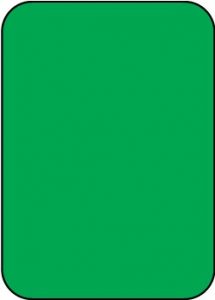Home → For Libraries → Public Value →How to Develop a Good Story
How to Develop a Good Story
Stories increase fundraising for library foundations and improve the odds that taxpayers will support public spending on libraries.
For an example of the power of stories, watch the first 12 minutes of the video “Harnessing the Power of Stories” by Jennifer Aaker, Professor of Marketing at Standard’s Graduate School of Business.
Four elements of story construction are outlined for library fundraising in “Advocacy and the Power of Narrative: Storytelling as a fundraising tool” by James LaRue, American Libraries Magazine. October 23, 2018.
A lot of us are not born storytellers and think this is beyond our capabilities. However, most everyone can tell a story. The question is: Can we tell a good story that makes a point. One method for developing good stories that make a point is described in:
- Michael Bosworth and Ben Zoldan in What Great Salespeople Do: The Science of Selling Through Emotional Connection and the Power of Story. McGraw Hill, NY. 2012.
“But wait, we aren’t salespeople! We are librarians! We are volunteers!”
As library advocates, we have had the same reactions. But if we want public financial support we have to step back and think about what salespeople do. They try to demonstrate that the benefits of their projects or services are greater than the costs. That is what you are doing when you encourage people to consider both the private and the public value of your library services.
The difference is that we as advocates or librarians can focus on being sure that people have all the facts on both benefits and costs and not use deceptive or distorted information. In part, this means we might have to admit now and then that one of our programs does not have benefits greater than costs or that the research on the logic we are using in our public value narratives is not yet backed up by solid information. This is what can differentiate us from the stereotypical view of aggressive, greedy third-party money requesters.
Now back to the suggested approach for telling stories by Bosworth and Zoldan. They present a very practical approach that has helped us build stories that illustrate the point of your public value statement in a more personal and memorable way.
It’s briefly summarized below, and recommend you read it after checking it out from your library or via interlibrary loan.
Summary of the Story Leader Approach
Many people think that storytellers are simply born with this ability. Bosworth and Zoldan (2012) argue that anyone can learn to tell a good story or anecdote. Further, they provide a step-by-step process for doing this. This is outlined in Table 1.
The connection to the public value statements and public value narratives explaining the value of your local library is that the “main point” of the stories come from your public value statements.
Recall that each service of your library needs its own public value statement. While you could have a public value statement and the related story only for children’s programming or pre-school programming, the process works better if you focus on specific pieces of your children’s program. For example, if you have a “Read to a Dog” program this is an excellent candidate for both a public value statement and a story because there is research on the impacts of this approach.
There are five elements to each story, starting with the point or moral of the story. When telling, the story, however, you focus on elements 1 through 4 (the setting, complications, the turning point, and the resolution). The stories focus on the efforts of yourself or another character to achieve something, the obstacles in the story’s main character’s way, the point at which the character figures out how to solve his/her problem, and the results. This struggle makes the story interesting and keeps the person or persons you are telling it to, engaged. It creates connections between you and the listeners.
Pros and Cons of Stories: Participants of the “Story Telling Workshop” at the Maine Library Association/Maine Association of School Librarians, cited the following advances of using stories to communicate the value of a library:
- It is easier for people to remember the stories than for them to remember statistics.
- Stories have more emotional impact because they involve real people in real situations.
- Stories sometimes have more credibility than technically complicated empirical studies since the stories can be checked more easily.
- Stories that peak interest in a program might lead to greater exploration of the logic and evidence behind the story.
- Stories will help patrons and non-patrons alike understand those library services which they have never used.
- Stories make the teller much more comfortable than just using the public value statements. Introducing the public value via a story feels less like “selling” and puts the storyteller as well as the listener at ease.
- After telling your story just a few times, it really becomes fun.
- Because it is more fun for the storyteller and is well received by the listener, you are much more likely to share the public value message more often.
There are three major disadvantages of stories:
- If they are not developed with a point in mind, the story can be simply a feel-good anecdote that accomplishes little in terms of helping the public understand the value of their library.
- If there is no data to illustrate whether or not the story is typical of the impact of the I
- If there are no empirical studies on the effectiveness of the library service in the program, the story will be seen by some as just a colorful hypothesis of the potential impacts.
Example of Developing a Story on the “Read to a Dog” Program
| Story Element | Name of Story Element | Script for “Curt’s Story”**** |
|---|---|---|
| 0 | Main Point of story (yellow card**) |
Library programs like “Read to a Dog” are a great investment for our community, both for the kids involved and for all the rest of us who benefit indirectly as these kids do better in school.” |
| 4 *** | Resolution of story (red card) |
Curt’s attitude about reading improved remarkably. He now voluntarily reads to his dad, Tom, at night, something which totally surprised Tom. And now, he begs his dad to take him to the library and to the bookstore. Tom says his son, Curt, is reading 200 to 300 percent better than before he starting in the library’s “Read to a Dog” program. Obviously, Curt is laying the foundation to do better in school, to go through it faster, and to go further. He and his family will benefit from this in many ways. Indirectly, we, as local taxpayers and neighbors, also benefit, since the cost of his education will be slightly less. And we benefit in the long run as he earns more, is self-supporting, pays higher taxes, and contributes more to society. The bottom line is that children’s programs such as the “Read to a Dog” program are a good investment for our community and not just nice to have. |
| 1 | Setting of story (green card) |
Our story starts in September 2014. Curt, a bright, energetic youngster, was 8 years old in the third grade. His family lived in a wealthy coastal town in Maine with one of the best school systems in the state. Curt’s parents, like most well-educated parents, believed that the high quality of the local schools would give Curt lifelong advantages. His father, Tom, pictured Curt achieving great things. |
| 2 | Complication in the story (white card) |
But as Curt started third grade in September, he struggled with reading. He was very anxious when asked to read. Tom, his dad, told me that he tried to get Curt to read at home but it was like pulling teeth. Tom tried every means possible of encouraging Curt to read more. But nothing seemed to work. |
| 3 | Turning Point in the story (blue card) |
Then Tom saw an announcement about the “Read to a Dog” program at the library and signed Curt up for 15 minutes reading to Winston, a golden lab, on the next Wednesday. Curt loved it and asked to come back the next day to read to Maddy, a black lab. Curt and his dad, Tom, have come back twice a week for the past four months. |
| *For an overview of the “Read to a Dog” program, visit the Intermountain Therapy Animals website, and training is available in Maine therapy dog at https://www.therapydogs.com/Public/Home.aspx.
** Notes on each of the elements are put on small colored cards. ***Bosworth and Zoldan (2012) suggest that hand-written notes on each of the elements be put on small colored cards rather than typing out the story. For ease of reading, the results are not in the script here. ****This number reflects the order in which the element appears when telling the story while this table reflects the order in which the elements should be developed. The main point isn’t directly part of the story. *****Real anecdote but I use pseudonyms for the boy, Curt, and his dad, Tom for their privacy. Thanks to Rachel Davis, Assistant Director/Children’s Librarian, Thomas Memorial Library, Cape Elizabeth for sharing this story and putting me in touch with “Tom.” G. Morse. |
||
Adding Emotion to the Story
Bosworth and Zoldan (2012) suggest that you add one or two words about the primary emotion on each card (of the 6,000 words on emotion in English). They provide a list of 61 words (p. 84). Here are several other lists of words to jog your thoughts on how you would represent the emotion of each element.
- Article: 600+ Power Words Proven to Boost Conversions (+ Free PDF) (SmartBlogger website)
- Article: 50 Trigger Words and Phrases for Powerful Multimedia Content (copyblogger website)
The only card you don’t put an emotional word on is “The Point” (yellow card). Bosworth and Zoldan suggest you do the following:
Ask yourself, “How did I [or the character] feel at this point in the story?” Name the emotion. Now jot it down, just a word or two at the bottom of the card. (p.85)
They suggest circling the emotion word and putting it in large print if it is intensely emotional. These are just visual clues for when you tell the story orally.
Story Cards
Table 3 shows another aspect of the story development advocated by Bosworth and Zoldan (2012, p. 74). Table 2 gave a possible script for Curt’s Story in order to illustrate the nature of the story. Table 3 shows Curt’s Story with two differences. First, the order is shown in the order it would be told, starting with the Setting, Complications, Turning Point, and Resolution. Second, the first column is shown in the script. This is because the idea of the cards is to have brief notes on the story. Bosworth and Zoldan claim that doing this by hand rather than on a computer allows more creativity in developing an emotionally strong story since you don’t worry about grammar and spelling.
Do We Really Need the Cards?
- Yes, to develop and refine the story and to practice it with a mirror two or three times and a friend or family member a couple of times.
- No, after a couple of practice runs, you will feel very comfortable telling it with no cards. Don’t worry about the exact words. Just be authentic and tell the story!
